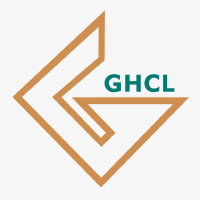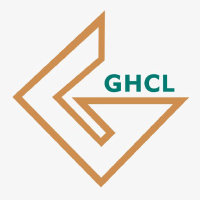
GHCL Ltd
NSE:GHCL


| US |

|
Johnson & Johnson
NYSE:JNJ
|
Pharmaceuticals
|
| US |

|
Berkshire Hathaway Inc
NYSE:BRK.A
|
Financial Services
|
| US |

|
Bank of America Corp
NYSE:BAC
|
Banking
|
| US |

|
Mastercard Inc
NYSE:MA
|
Technology
|
| US |

|
UnitedHealth Group Inc
NYSE:UNH
|
Health Care
|
| US |

|
Exxon Mobil Corp
NYSE:XOM
|
Energy
|
| US |

|
Pfizer Inc
NYSE:PFE
|
Pharmaceuticals
|
| US |

|
Palantir Technologies Inc
NYSE:PLTR
|
Technology
|
| US |

|
Nike Inc
NYSE:NKE
|
Textiles, Apparel & Luxury Goods
|
| US |

|
Visa Inc
NYSE:V
|
Technology
|
| CN |

|
Alibaba Group Holding Ltd
NYSE:BABA
|
Retail
|
| US |

|
3M Co
NYSE:MMM
|
Industrial Conglomerates
|
| US |

|
JPMorgan Chase & Co
NYSE:JPM
|
Banking
|
| US |

|
Coca-Cola Co
NYSE:KO
|
Beverages
|
| US |

|
Walmart Inc
NYSE:WMT
|
Retail
|
| US |

|
Verizon Communications Inc
NYSE:VZ
|
Telecommunication
|
Utilize notes to systematically review your investment decisions. By reflecting on past outcomes, you can discern effective strategies and identify those that underperformed. This continuous feedback loop enables you to adapt and refine your approach, optimizing for future success.
Each note serves as a learning point, offering insights into your decision-making processes. Over time, you'll accumulate a personalized database of knowledge, enhancing your ability to make informed decisions quickly and effectively.
With a comprehensive record of your investment history at your fingertips, you can compare current opportunities against past experiences. This not only bolsters your confidence but also ensures that each decision is grounded in a well-documented rationale.
Do you really want to delete this note?
This action cannot be undone.

| 52 Week Range |
438.4
740.75
|
| Price Target |
|
We'll email you a reminder when the closing price reaches INR.
Choose the stock you wish to monitor with a price alert.

|
Johnson & Johnson
NYSE:JNJ
|
US |

|
Berkshire Hathaway Inc
NYSE:BRK.A
|
US |

|
Bank of America Corp
NYSE:BAC
|
US |

|
Mastercard Inc
NYSE:MA
|
US |

|
UnitedHealth Group Inc
NYSE:UNH
|
US |

|
Exxon Mobil Corp
NYSE:XOM
|
US |

|
Pfizer Inc
NYSE:PFE
|
US |

|
Palantir Technologies Inc
NYSE:PLTR
|
US |

|
Nike Inc
NYSE:NKE
|
US |

|
Visa Inc
NYSE:V
|
US |

|
Alibaba Group Holding Ltd
NYSE:BABA
|
CN |

|
3M Co
NYSE:MMM
|
US |

|
JPMorgan Chase & Co
NYSE:JPM
|
US |

|
Coca-Cola Co
NYSE:KO
|
US |

|
Walmart Inc
NYSE:WMT
|
US |

|
Verizon Communications Inc
NYSE:VZ
|
US |
This alert will be permanently deleted.
 GHCL Ltd
GHCL Ltd
GHCL Ltd
Investor Relations
GHCL Ltd. engages in the manufacture and trading chemical and textile products. The company is headquartered in Noida, Uttar Pradesh and currently employs 3,655 full-time employees. The firm is engaged in the business of manufacturing and trading of chemicals and yarn. The Company’s business includes chemicals and spinning businesses. In Chemicals, the Company mainly manufactures soda ash (Anhydrous Sodium Carbonate) that is used as a raw material for detergents and glass industries, and sodium bicarbonate (baking soda). The firm's Soda Ash is available in two categories: light soda ash, dense soda ash. The company also produces sodium bicarbonate, and these products are marketed in India under the brand name LION. In textiles, the Company's spinning unit at Madurai, Tamil Nadu produces various varieties of fiber (yarn), which is sold to domestic consumers as well as exported worldwide.

GHCL Ltd. engages in the manufacture and trading chemical and textile products. The company is headquartered in Noida, Uttar Pradesh and currently employs 3,655 full-time employees. The firm is engaged in the business of manufacturing and trading of chemicals and yarn. The Company’s business includes chemicals and spinning businesses. In Chemicals, the Company mainly manufactures soda ash (Anhydrous Sodium Carbonate) that is used as a raw material for detergents and glass industries, and sodium bicarbonate (baking soda). The firm's Soda Ash is available in two categories: light soda ash, dense soda ash. The company also produces sodium bicarbonate, and these products are marketed in India under the brand name LION. In textiles, the Company's spinning unit at Madurai, Tamil Nadu produces various varieties of fiber (yarn), which is sold to domestic consumers as well as exported worldwide.





























 You don't have any saved screeners yet
You don't have any saved screeners yet
